
Heinrich Ehrler was a German Luftwaffe military aviator and wing commander during World War II. As a fighter ace, he is credited with 208 enemy aircraft shot down in over 400 combat missions. The majority of his victories were claimed over the Eastern Front, with nine claims over the Western Front which included eight in the Messerschmitt Me 262 jet fighter.

Between 1933 and 1945, the organization of the Luftwaffe underwent several changes. Originally, the German military high command, for their air warfare forces, decided to use an organizational structure similar to the army and navy, treating the aviation branch as a strategic weapon of war. Later on, during the period of rapid rearmament, the Luftwaffe was organized more in a geographical fashion.

Gerhard "Gerd" Barkhorn was a German military aviator who was a renowned wing commander in the Luftwaffe during World War II. As a fighter ace, he was the second most successful fighter pilot of all time after fellow pilot Erich Hartmann. Other than Hartmann, Barkhorn is the only fighter ace to ever exceed 300 claimed victories. Following World War II, he became a high-ranking officer in the German Air Force of the Federal Republic of Germany.

Kurt Welter was a German Luftwaffe fighter ace and the most successful Jet Expert of World War II. A flying ace or fighter ace is a military aviator credited with shooting down five or more enemy aircraft during aerial combat. He claimed a total of 63 aerial victories—that is, 63 aerial combat encounters resulting in the destruction of the enemy aircraft—achieved in 93 combat missions. He recorded 56 victories at night, including 33 Mosquitos, and scored more aerial victories from a jet fighter aircraft than anyone else in World War II and possibly in aviation history. However this score is a matter of controversy; research of Royal Air Force losses suggests Welter overclaimed Mosquito victories considerably. Against this, Luftwaffe claims were very strict, requiring confirmation and proof by witnesses: The remains of aircraft shot down and crashed would be verifiable and recorded on the ground in the sector claimed.

Martin Drewes was a German Luftwaffe military aviator and night fighter ace during World War II. He was credited with 52 victories of which 43 were claimed at night whilst flying variants of the Messerschmitt Bf 110 heavy fighter. The majority of his victories were claimed over the Western Front in Defence of the Reich missions against the Royal Air Force's Bomber Command.
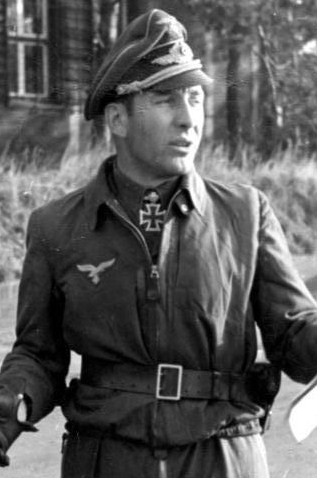
Theodor Weissenberger was a German Luftwaffe military aviator during World War II and a fighter ace credited with 208 enemy aircraft shot down in 375 combat missions. The majority of his victories were claimed near the Arctic Ocean in the northern sector of the Eastern Front, but he also claimed 33 victories over the Western Front. He claimed eight of these victories over the Western Allies while flying the Messerschmitt Me 262 jet fighter.
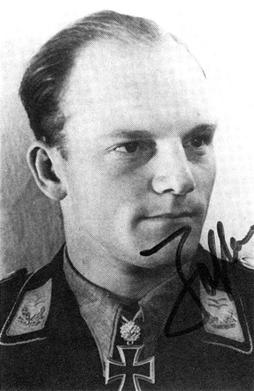
Günther Josten was a German Luftwaffe military aviator during World War II, a fighter ace credited with 178 enemy aircraft shot down in 420 combat missions, all of which claimed over the Eastern Front. Following World War II, he served in the newly established West Germany's Air Force in the Bundeswehr.

Centocelle Airport was an airport situated in Centocelle, a quarter of Rome in Italy. It is also referred to as Rome-Centocelle Airport.
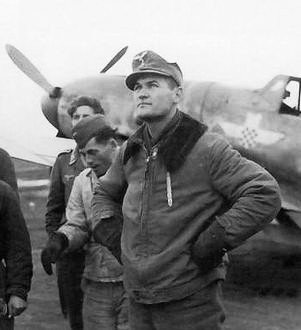
Mato Dukovac was the leading Croatian fighter ace of World War II, credited with between 40 and 44 confirmed victories. He joined the Air Force of the Independent State of Croatia following the Axis invasion of Yugoslavia in April 1941, and then the Luftwaffe, with which he flew combat missions on the Eastern Front. His tours of the Eastern Front spanned October and November 1942, February to June 1943, and October 1943 to March 1944. He defected to the Soviet Union on 20 September 1944 and was returned to Yugoslavia in November 1944. He worked as a flight instructor for the Yugoslav Air Force in Pančevo and Zadar before defecting to Italy in April 1945.

Luftflotte 1 was one of the primary divisions of the German Luftwaffe in World War II. It was formed on 1 February 1939 from Luftwaffengruppenkommando 1 in Berlin. This Luftwaffe detachment served in Estonia, Latvia, Lithuania and Finland, supporting Axis forces in area; with command offices in Malpils, Latvia,, Eastern front.

Heinz Schmidt was a German Luftwaffe military aviator during World War II, a fighter ace credited with 173 enemy aircraft shot down in 712 combat missions. All of his victories were claimed over the Eastern Front.
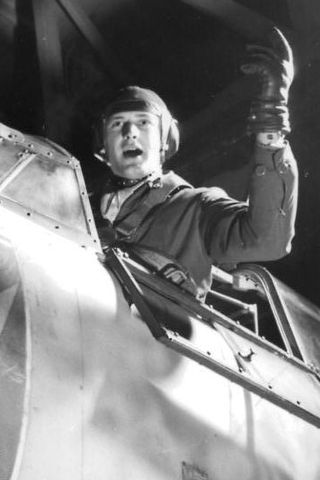
Heinz Strüning was a German Luftwaffe military aviator during World War II, a night fighter ace credited with 56 nocturnal aerial victories claimed in 280 combat missions.

Günther Schack was a German Luftwaffe military aviator during World War II and a fighter ace credited with 174 enemy aircraft shot down in 780 combat missions. All of his victories were claimed on the Eastern Front.
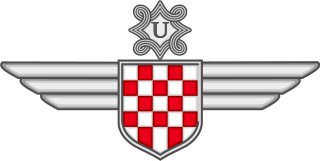
The Croatian Air Force Legion, or HZL, was a unit of the Luftwaffe, composed entirely of volunteers drawn from the nazi puppet-state, the Independent State of Croatia. Many of them had previously served in the Royal Yugoslav Air Force in April 1941 during the Nazi Invasion of Yugoslavia.

Gerhard Hoffmann was a German Luftwaffe military aviator during World War II, a fighter ace credited with 130 aerial victories—that is, 130 aerial combat encounters resulting in the destruction of the enemy aircraft—claimed in an unknown number of combat missions.

Herbert Heinrich Otto Lütje was a German military aviator, a wing commander in the Luftwaffe during World War II and an officer in the postwar German Air Force. As a fighter ace, he was credited with 50 aerial victories claimed in 247 combat missions. His 47 nocturnal claims made him the twentyfourth most successful night fighter pilot in the history of aerial warfare. All of his victories were claimed in Defense of the Reich missions, the majority at night against the Royal Air Force's (RAF) Bomber Command and three daytime claims, one over a United States Army Air Forces (USAAF) Boeing B-17 Flying Fortress bomber and two Lockheed P-38 Lightning fighter aircraft.
Helmut Bergmann was a German Luftwaffe military aviator during World War II, a night fighter ace credited with 36 enemy aircraft shot down in 135 combat missions. All of his victories were claimed over the Western Front in nocturnal Defense of the Reich missions against the Royal Air Force's Bomber Command.
Latvian Riflemen Soviet Divisions were military formations of the Red Army during World War II created in 1941 and consisting primarily of ethnic Latvians.
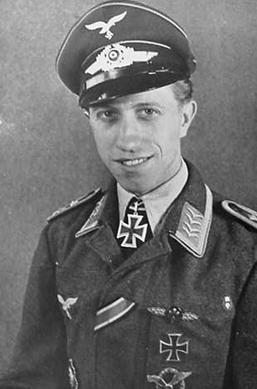
Rudolf Frank was a German Luftwaffe military aviator during World War II, a night fighter ace credited with 45 enemy aircraft shot down in 183 combat missions. All of his victories were claimed over the Western Front in nocturnal Defense of the Reich missions against the Royal Air Force's Bomber Command.
Leopold "Poldi" Fellerer was a Luftwaffe night fighter ace and recipient of the Knight's Cross of the Iron Cross during World War II. The Knight's Cross of the Iron Cross was awarded to recognise extreme battlefield bravery or successful military leadership.

















